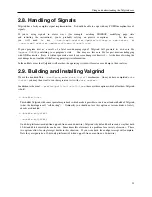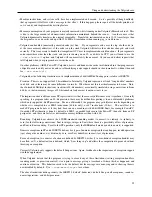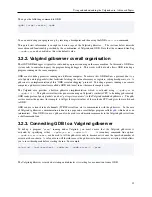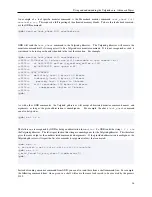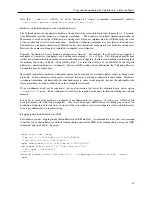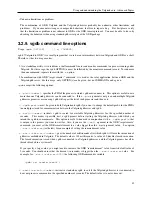
Using and understanding the Valgrind core
sewardj@phoenix:~/newmat10$ ~/Valgrind-6/valgrind -v ./bogon
==25832== Valgrind 0.10, a memory error detector for x86 RedHat 7.1.
==25832== Copyright (C) 2000-2001, and GNU GPL’d, by Julian Seward.
==25832== Startup, with flags:
==25832== --suppressions=/home/sewardj/Valgrind/redhat71.supp
==25832== reading syms from /lib/ld-linux.so.2
==25832== reading syms from /lib/libc.so.6
==25832== reading syms from /mnt/pima/jrs/Inst/lib/libgcc_s.so.0
==25832== reading syms from /lib/libm.so.6
==25832== reading syms from /mnt/pima/jrs/Inst/lib/+.so.3
==25832== reading syms from /home/sewardj/Valgrind/valgrind.so
==25832== reading syms from /proc/self/exe
==25832==
==25832== Invalid read of size 4
==25832==
at 0x8048724: BandMatrix::ReSize(int,int,int) (bogon.cpp:45)
==25832==
by 0x80487AF: main (bogon.cpp:66)
==25832==
Address 0xBFFFF74C is not stack’d, malloc’d or free’d
==25832==
==25832== ERROR SUMMARY: 1 errors from 1 contexts (suppressed: 0 from 0)
==25832== malloc/free: in use at exit: 0 bytes in 0 blocks.
==25832== malloc/free: 0 allocs, 0 frees, 0 bytes allocated.
==25832== For a detailed leak analysis, rerun with: --leak-check=yes
The GCC folks fixed this about a week before GCC 3.0 shipped.
2.13. Warning Messages You Might See
Some of these only appear if you run in verbose mode (enabled by
-v
):
•
More than 100 errors detected.
Subsequent errors will still be recorded,
but in less detail than before.
After 100 different errors have been shown, Valgrind becomes more conservative about collecting them.
It then
requires only the program counters in the top two stack frames to match when deciding whether or not two errors
are really the same one. Prior to this point, the PCs in the top four frames are required to match. This hack has
the effect of slowing down the appearance of new errors after the first 100. The 100 constant can be changed by
recompiling Valgrind.
•
More than 1000 errors detected.
I’m not reporting any more.
Final
error counts may be inaccurate.
Go fix your program!
After 1000 different errors have been detected, Valgrind ignores any more. It seems unlikely that collecting even
more different ones would be of practical help to anybody, and it avoids the danger that Valgrind spends more
and more of its time comparing new errors against an ever-growing collection.
As above, the 1000 number is a
compile-time constant.
27











